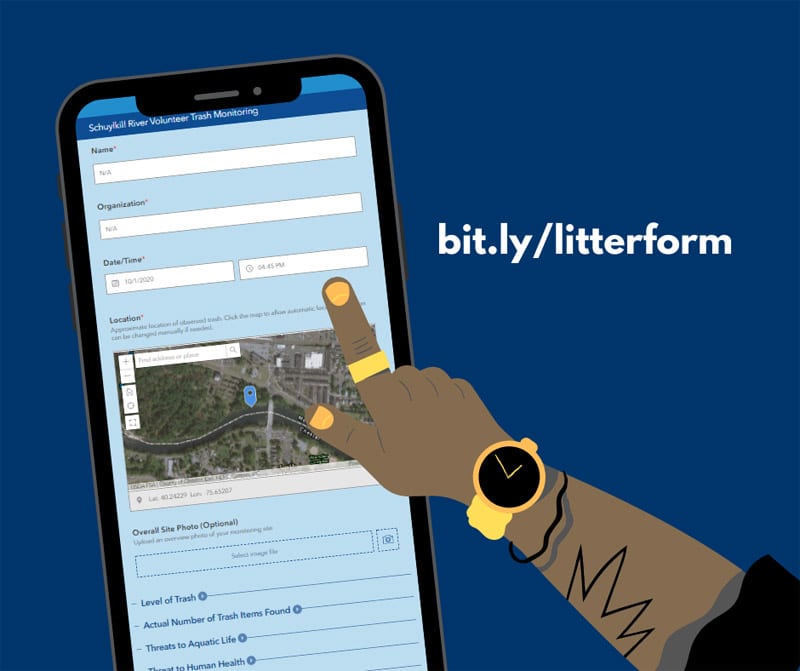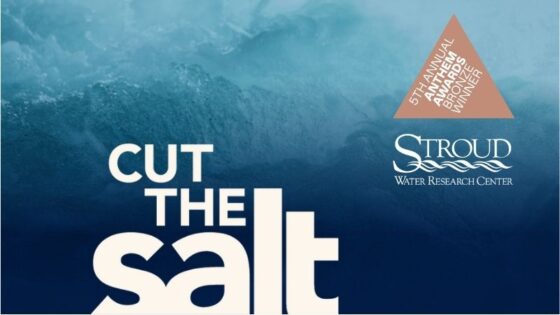Did you hear about how the community along the Schuylkill River helped identify hotspots for trash in the river and along the banks? Plastics, cans, and other debris were reported by volunteer trash monitors to help determine where clean-ups were needed. The good news? Many areas of the Schuylkill are in good shape, and those that are not can receive help. Stroud Water Research Center was proud to partner in the Schuylkill River Partner Water Quality Project.
An Accessible Tool

One particularly innovative component of the partnership is an online tool to provide a visual assessment of trash on the banks and in the river. The tool is accessible to anyone with a cell phone while they are on the banks of the Schuylkill River.
Although the study period ended, the portal is still available to report trash, illegal dumping, and hazards to people and wildlife. Visitors can use it while walking, running, riding, or paddling along the River.
The Good News
The original project results are available on an interactive map for use by local officials and organizations who can fix the problems reported. And the good news? Between 73% and 90% of locations reported were in good shape! That means resource agencies can focus their efforts on stretches where trash is accumulating.
What Can You Do?
If you don’t live near the Schuylkill, think about your local stream. What do you see along the banks or in the water? Contact your local government office with your concerns. For environmental emergencies like oil or chemical spills, call the National Response Center at 1-800-424-8802.
The Schuylkill River Partner Water Quality Project is supported by an amazing team of partners: Berk’s Nature, Bartram’s Garden, The Schuylkill Center for Environmental Education, Princeton Hydro, and Stroud Water Research Center. The project was made possible by a grant from the William Penn Foundation.



